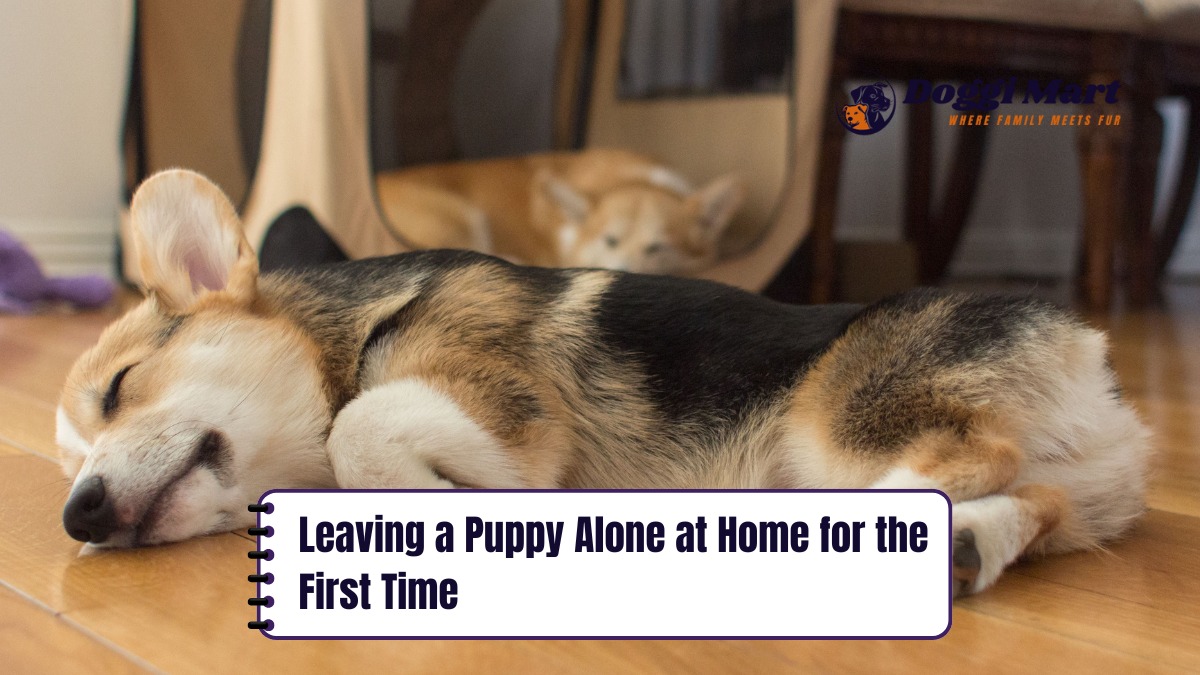
Leaving your puppy alone at home for the first time can be a challenging experience. Puppies are like babies; they need attention, care, and love. However, it’s also important to teach them how to spend time alone. This helps prevent separation anxiety and promotes independence.
In this guide, we’ll cover everything you need to know to make the process easier for both you and your puppy.
Understanding Your Puppy’s Needs
Before you leave your puppy alone, it’s essential to understand their basic needs. Puppies need food, water, exercise, and mental stimulation.
Key needs of a puppy:
- Food and Water: Always ensure your puppy has access to fresh water. Feed them before you leave, following their regular meal schedule.
- Exercise: A tired puppy is a calm puppy. Play with them or take them for a walk to burn off energy.
- Mental Stimulation: Toys or puzzle feeders can keep your puppy entertained while you’re away.
Preparing Your Home
Creating a safe and comfortable environment for your puppy is crucial. Here are steps to prepare your home:
1. Puppy-Proofing
Remove anything your puppy might chew or swallow, like wires, shoes, or small objects. Secure cabinets and keep harmful substances out of reach.
2. Designate a Space
Choose a small, confined area for your puppy. A playpen or a gated section of a room works well. This prevents them from roaming and getting into trouble.
3. Provide Essentials
Ensure their designated area has:
- A soft bed or blanket.
- Chew toys or puzzle feeders.
- A water bowl.
Gradual Training
Leaving your puppy alone suddenly can be overwhelming for them. Gradual training helps them adjust.
Step-by-Step Process:
- Start with Short Durations
Begin by leaving your puppy alone for a few minutes while staying nearby. Gradually increase the time. - Use a Routine
Puppies thrive on routines. Set a specific time for leaving and returning. - Practice Departures
Practice leaving the house by putting on your shoes or picking up your keys without actually leaving. This desensitizes your puppy to these cues. - Avoid Overexcited Greetings
When you return, keep greetings calm to avoid reinforcing anxiety.
Also Read: Best Dog Toys to Keep Them Busy
Coping with Separation Anxiety
Some puppies experience separation anxiety, which can cause them to bark, whine, or act destructively when left alone.
Signs of Separation Anxiety:
- Excessive barking or whining.
- Chewing furniture or objects.
- Potty accidents even if they are trained.
Tips to Manage Anxiety:
- Comfort Items: Leave a piece of clothing with your scent.
- Calming Tools: Use calming sprays or music designed for dogs.
- Professional Help: If the anxiety is severe, consult a trainer or veterinarian.
How Long Can You Leave a Puppy Alone?
The duration depends on the puppy’s age. Use the following table as a guide:
| Puppy’s Age | Maximum Time Alone |
|---|---|
| 8–10 weeks | 1 hour |
| 10–12 weeks | 2 hours |
| 3–6 months | 3–4 hours |
| 6 months+ | 4–6 hours |
Puppies younger than 6 months shouldn’t be left alone for more than 4 hours.
Helpful Tools and Accessories
Certain tools can make leaving your puppy alone easier:
1. Interactive Toys
Toys that dispense treats keep puppies busy and entertained.
2. Cameras
Pet cameras let you monitor your puppy and talk to them remotely.
3. Crates
Crates provide a safe and secure space. Ensure the crate is comfortable and never use it as punishment.
What to Do Before Leaving
- Playtime: Spend 15–20 minutes playing with your puppy.
- Potty Break: Take them outside for a potty break to avoid accidents.
- Prepare Treats: Set up toys or treats in their area.
Common Mistakes to Avoid
- Leaving Too Soon
Don’t leave your puppy alone for long periods immediately. Gradual training is essential. - Ignoring Signs of Anxiety
Address anxiety symptoms early to prevent long-term issues. - Neglecting Exercise
An unexercised puppy is more likely to get bored and act out.
Final Thoughts
Leaving a puppy alone at home for the first time takes patience and preparation. By understanding their needs, creating a safe space, and training them gradually, you can help your puppy feel secure.
Remember, it’s a learning process for both of you. With time and consistency, your puppy will become more comfortable being alone.
Also Read: Mobile Grooming for Dogs: Benefits, Costs, and How to Choose the Best Service






